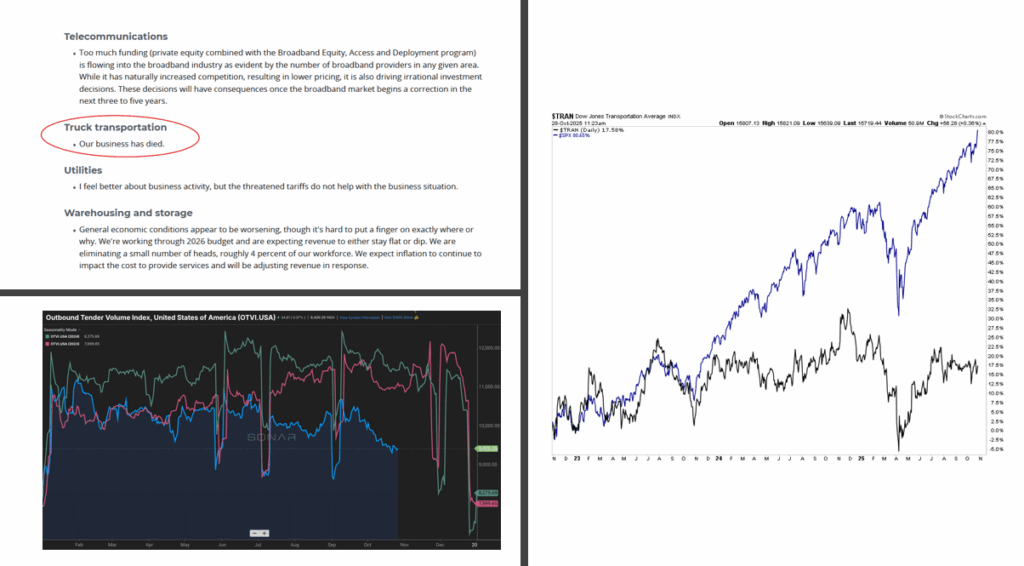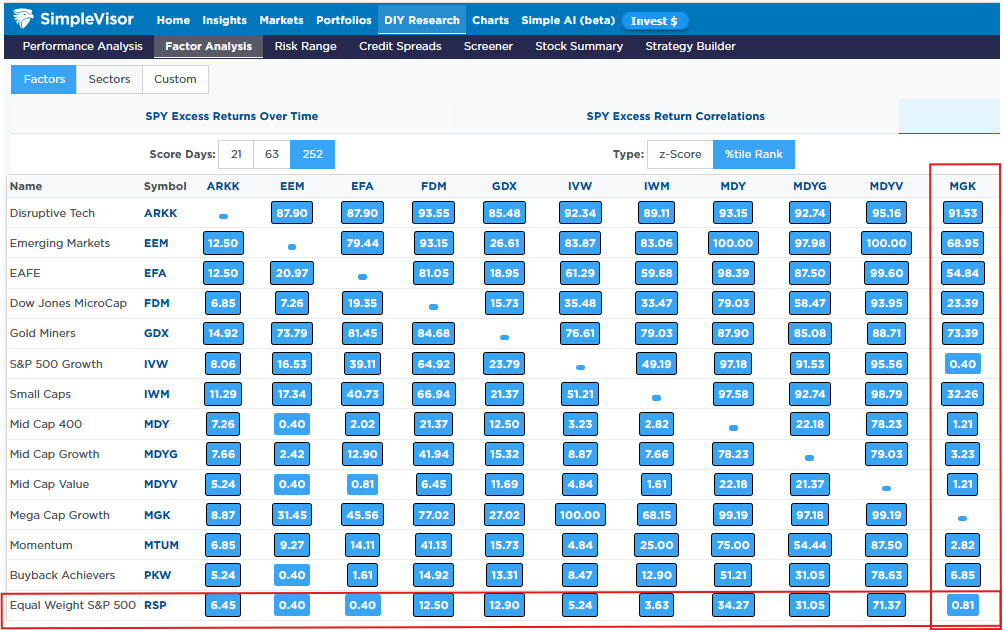InvestingPro’s Fair Value model captures 63% gain in Steelcase ahead of acquisition
Dow Theory is a market tool developed by Charles Dow in the very early 1900s. Dow also created the Dow Jones Industrial Average. The basic gist of Dow theory is that market trends are confirmed when gains or record highs are established in the broader market indexes, and then confirmed by similar trends and/or record highs in the Dow Jones Transportation Index.
Over 100 years ago, when he proposed the Dow Theory, the US was much more of a manufacturing nation; thus, the health of the shipping and trucking industries was a paramount gauge of the economy. Today, services account for over two-thirds of the economy; thus, shipping is not as important. That said, trucking, an essential component of the transportation industry, helps us appreciate the flow of goods within the US, whether domestically made or imported. Therefore, it can still serve as a good economic gauge.
With that, we present two graphs and a comment that elicits Dow Theory and asks whether we should be concerned or if Dow Theory is an artifact of the past.
- The first is a comment from the most recent Dallas Fed Services Survey. While it is only one trucking executive’s opinion, it speaks for itself.
- The graph on the lower left is the Outbound Tender Volume Index (OTVI). The index is a daily measure of the freight volume contracted by shippers for transport. Per its creator, FreightWaves, its data provides a real-time pulse of truckload demand in the freight market. As the graph shows, demand for trucking this year (blue) is much weaker than the prior two years.
- Lastly, the graph on the right shows that the Dow Transportation Index is significantly lagging the broader market. Per Charles Dow, this divergence does not confirm the S&P 500’s record highs.

Meta Disappoints Despite Good News
Meta (NASDAQ:META) shares fell by nearly ten percent on what appears to be good news. Revenues beat estimates by 3% and prior guidance from Meta by almost 5%. EPS missed estimates significantly, but it was due to a one-time accounting issue related to a temporary difference between taxable income and income reported on financial statements.
There’s no impact on future cash flows. Excluding the accounting earnings impact, earnings beat estimates. Most importantly, to the market, CapEx spending plans were increased for the remainder of 2025 and 2026.
Meta is going all out with its spending to transition from a social media platform to an AI computational platform wrapped into social media. As we share in the quote below from its CEO, Mark Zuckerberg, Meta is intent on being an AI leader.
I think it’s pretty early, but I think we’re seeing the returns in the core business that’s giving us a lot of confidence that we should be investing a lot more. And we want to make sure that we’re not underinvesting.
What we find interesting is that increased CapEx spending plans by other large companies have been met with applause. Is this a buying opportunity for Meta, or is the market starting to worry about overinvestment in AI? To help answer that question, consider that Microsoft is also trading lower after its earnings report, which also discussed increased CapEx spending plans.
Two S&P 500s: One Big Divergence
The S&P 500 index is weighted by market cap. Today, that means the top stocks carry much more weight than the remaining stocks. For instance, the Magnificent Seven account for a third of the daily price changes. While the weighted index is most followed, there is also an equal-weighted index. Comparing the market-cap-weighted and equal-weighted indexes can help us measure market breadth. What we have recently seen is a gross divergence between the two indexes.
The table below shows relative returns as compared to the S&P 500. The two highest excess returns over the last five days are those that are even more heavily weighted in the Magnificent Seven stocks (IVW and MGK) than the market-cap-weighted S&P 500. Towards the bottom, note that the equal-weighted S&P 500 (RSP) has significantly underperformed.
The second table quantifies the extent of the performance divergence. Per the graphic, over the last 252 trading days (one year), the correlation of excess returns between RSP and mega-cap stocks (MGK) is in the lowest .81 percentile. Another table (not shown) indicates that the relationship is nearly two standard deviations from the norm. The Tweet of the Day below provides further context on the gross outperformance of market-cap-weighted indexes versus their equally weighted counterparts.
The takeaway: the market is prime for a rotation from the most prominent companies to the many others being left out. The question is when?

Tweet of the Day

